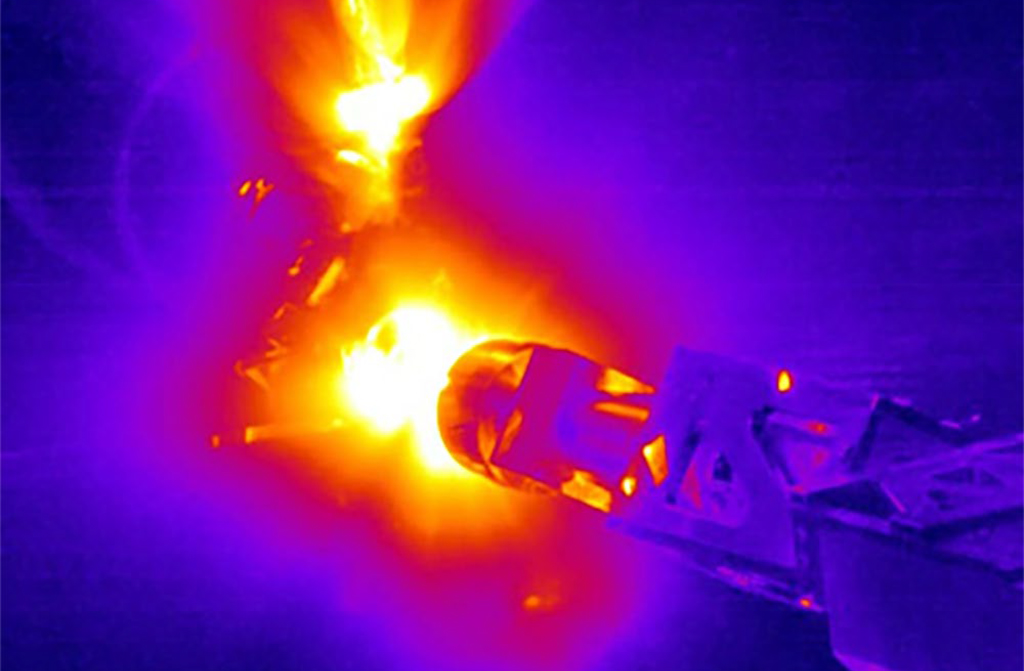NIF and Stockpile Stewardship
The National Ignition Facility, the world’s highest-energy laser system, is designed to create the extreme conditions—temperatures exceeding 100 million degrees and pressures more than 100 billion times that of the Earth’s atmosphere—similar to those in stars and in detonating nuclear weapons.
NIF is a cornerstone of the experimental element of stockpile stewardship and an essential component of the nation’s stockpile assessment and certification strategy.
Because it is the only facility that can create the conditions that are relevant to understanding the operation of modern nuclear weapons, NIF is a crucial element of the National Nuclear Security Administration’s science-based Stockpile Stewardship Program.
NIF can repeatedly simulate those conditions inside the Target Chamber’s controlled environment, giving dedicated teams of scientists and researchers the ability to reconstitute and improve upon the capabilities of underground testing.
NIF’s high energy density and inertial confinement fusion experiments, coupled with the increasingly sophisticated simulations available from some of the world’s most powerful supercomputers, increase our understanding of weapon physics, including the properties and survivability of weapons-relevant materials.
Putting Pressure on Nuclear Materials
NIF beams can be used to create conditions of extremely high energy density in materials. One example is using various arrangements of beams to shock materials and demonstrate how they behave at high temperatures and pressures.  Image of a NIF experiment at the moment of peak implosion. This experiment was aimed at developing a high-pressure strength measurement capability for plutonium. Understanding how the many kinds of materials used in nuclear weapons behave, especially as they age beyond their intended lifetimes, under the extreme environments produced in a thermonuclear reaction is a key element of stockpile stewardship.
Image of a NIF experiment at the moment of peak implosion. This experiment was aimed at developing a high-pressure strength measurement capability for plutonium. Understanding how the many kinds of materials used in nuclear weapons behave, especially as they age beyond their intended lifetimes, under the extreme environments produced in a thermonuclear reaction is a key element of stockpile stewardship.
NIF is also the only U.S. facility designed to perform experimental studies of fusion ignition and thermonuclear burn, the phenomenon that gives rise to the immense energy of modern nuclear weapons. NIF weapon-based experiments use extremely tiny amounts of test material—barely visible to the naked eye—and are completely safe.
Along with stockpile stewardship, NIF conducts a variety of experiments for the Department of Defense and other agencies as part of its National Security Applications (NSA) program.
The high rigor and multidisciplinary nature of NIF experiments play a key role in attracting, training, testing, and retaining new generations of skilled stockpile stewards who will continue the mission to protect America into the future (see Developing the Workforce).
More Information
“Lawrence Livermore National Laboratory Achieves Fusion Ignition,” LLNL News Release, December 14, 2022
“Milestone Shot Enhances Future of Stockpile Stewardship and Fusion Energy Science,” NIF & Photon Science News, February 15, 2022
“Video: ‘The Threshold of Ignition,’” NIF & Photon Science News, February 8, 2022
“National Ignition Facility Experiment Puts Researchers on Threshold of Fusion Ignition,” NIF & Photon Science News, August 18, 2021
“Fusion Supports the Stockpile,” NIF & Photon Science News, July 28, 2021
“Ten Years of the National Ignition Facility: What It Took to Make NIF a Reality” (Video)
Inertial Confinement Fusion Program, Weapons and Complex Integration Directorate
“Why Ignition? NIF Experiments and Stockpile Stewardship,” NIF & Photon Science News, June, 2018
“Ensuring the Reliability of the U.S. Nuclear Deterrent,” NIF & Photon Science News, September, 2017
“A Stellar Experimental Facility for Stockpile Sustainment and Fundamental Science,” Science & Technology Review, December, 2016
“Poised to Advance Stockpile Stewardship Research,” NIF & Photon Science News, December, 2016
“NIF Wins Plaudits for Stockpile Stewardship Role,” NIF & Photon Science News, October, 2015
“Stockpile Stewardship at 20 Years,” Science & Technology Review, July, 2015



